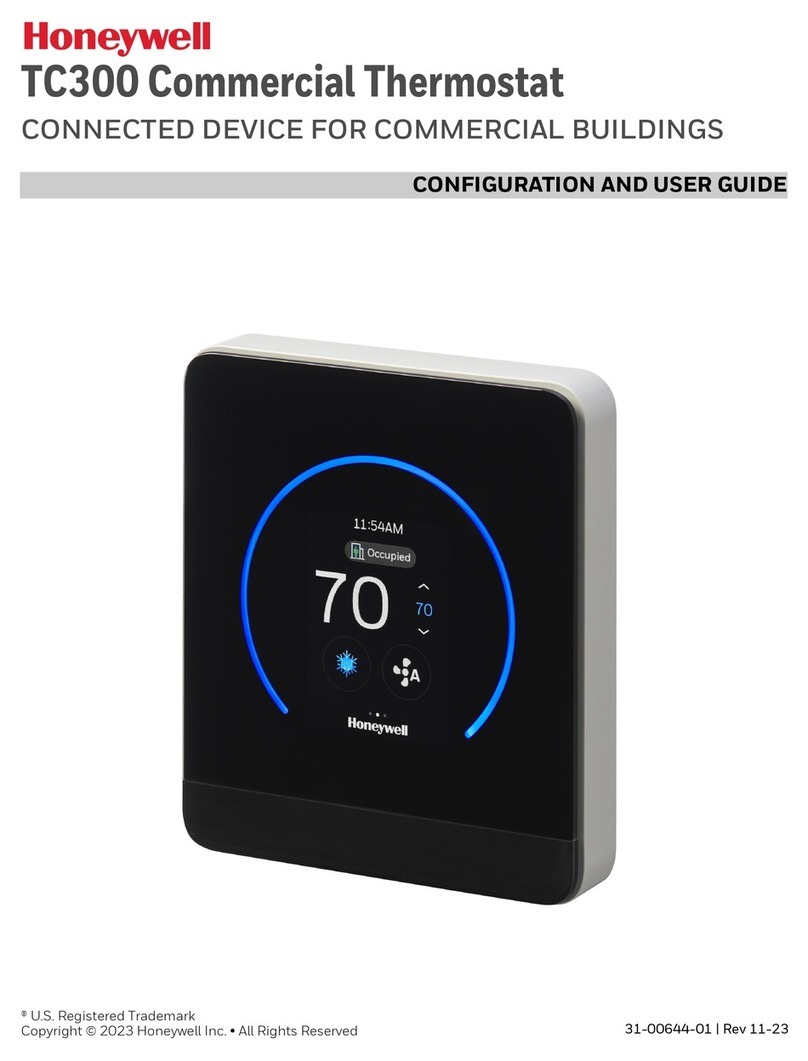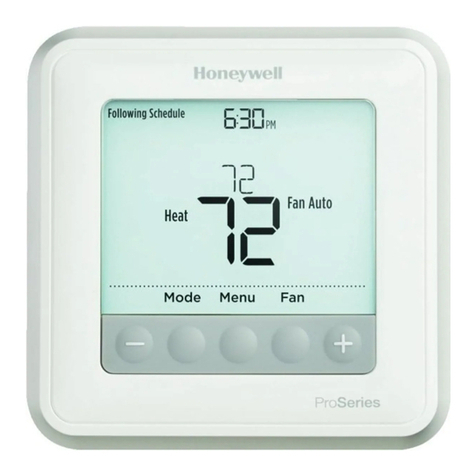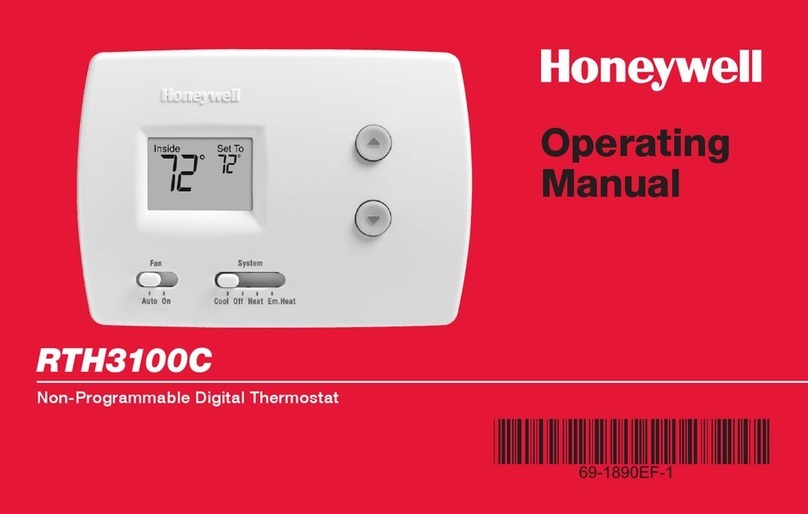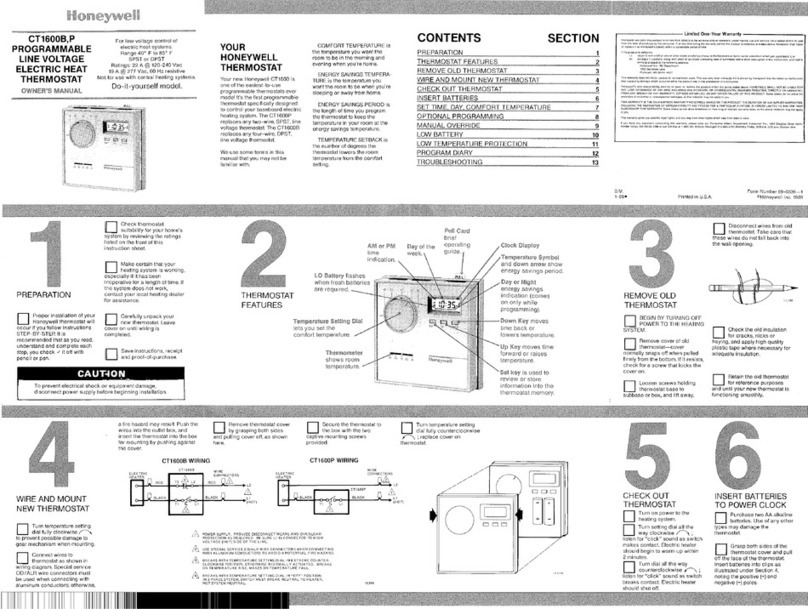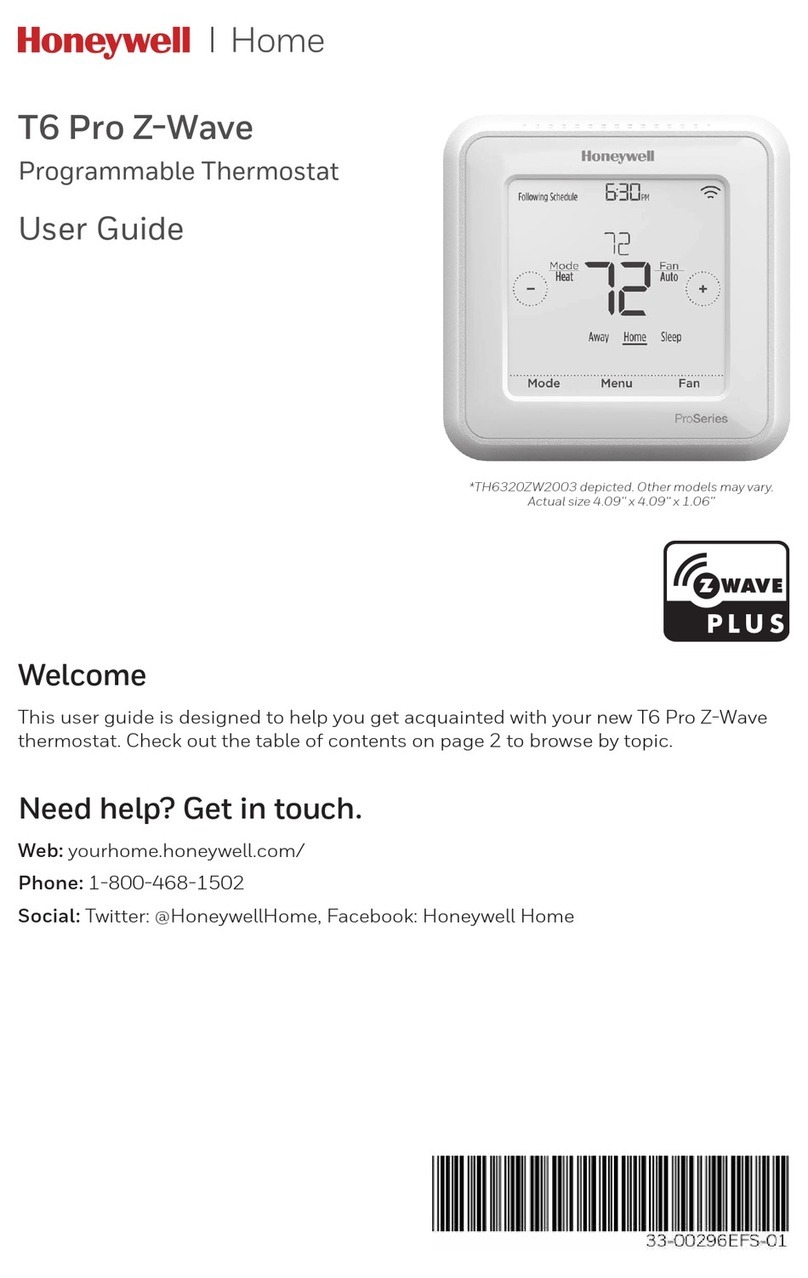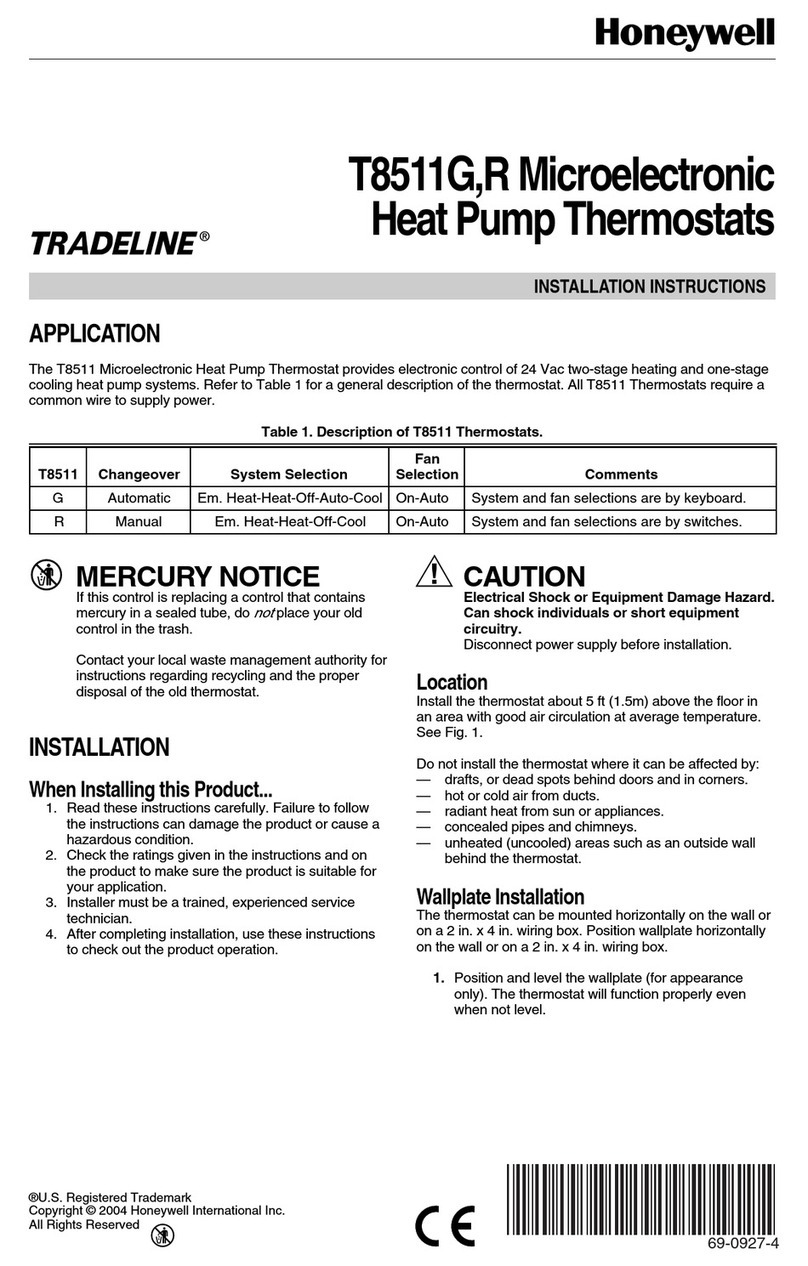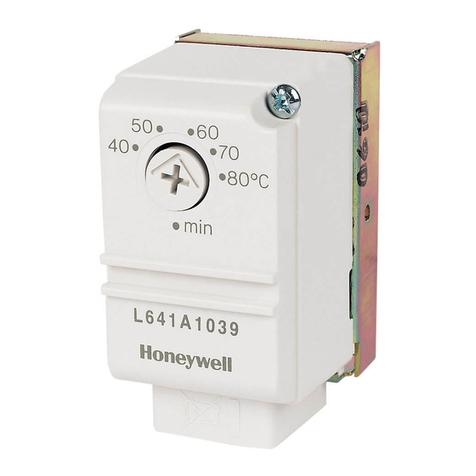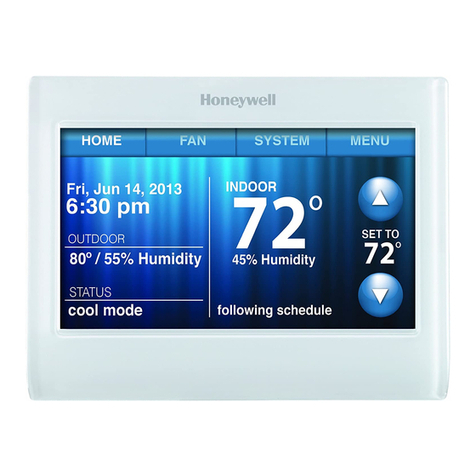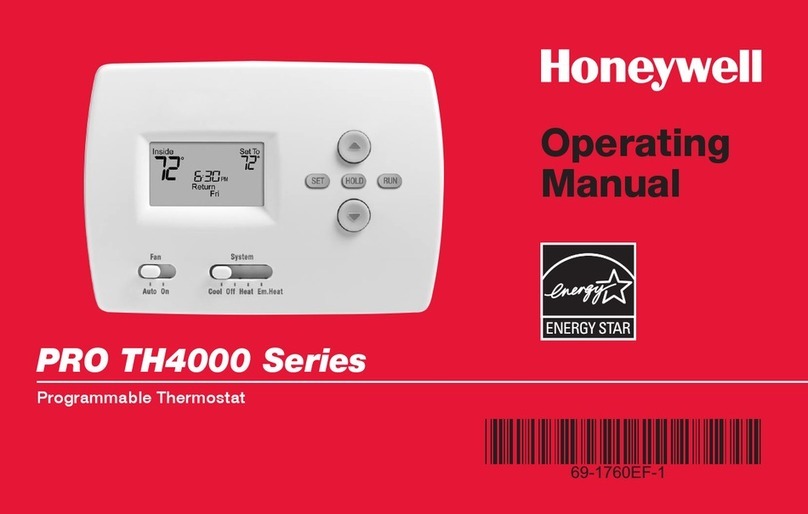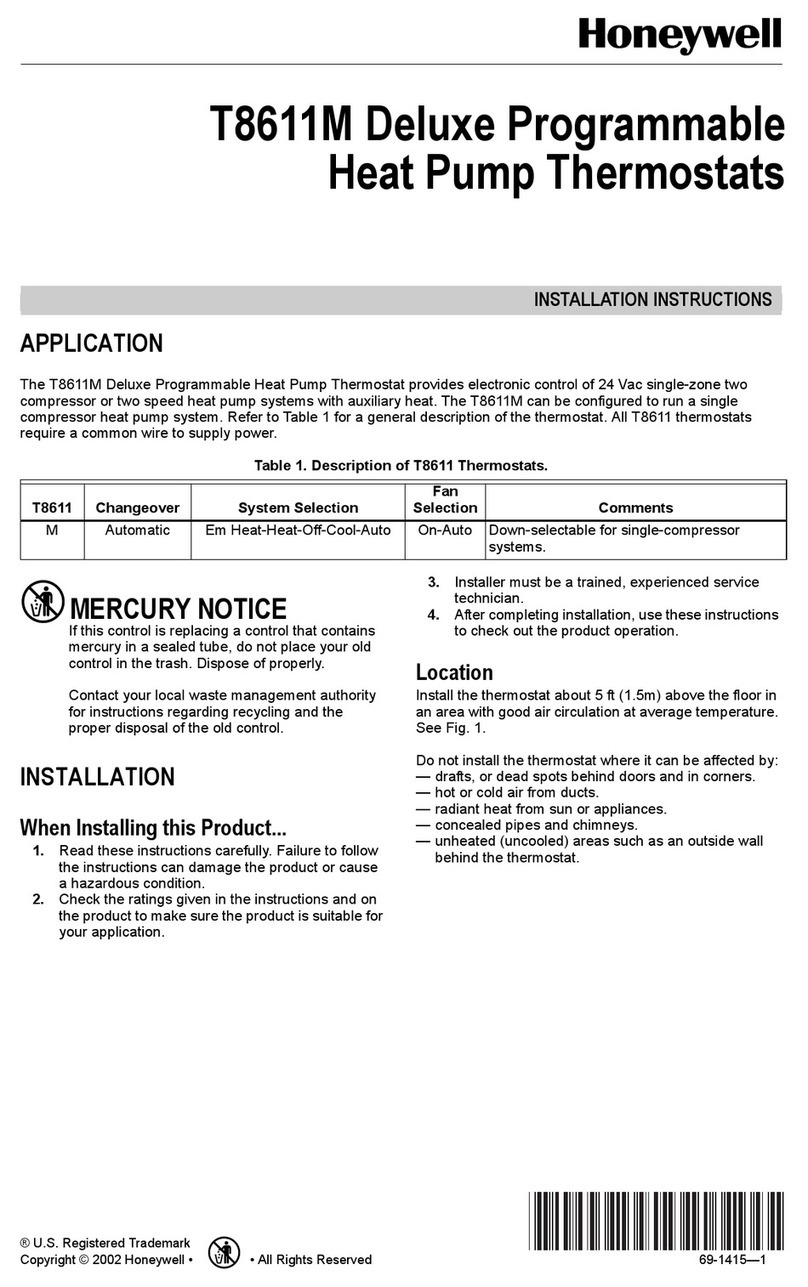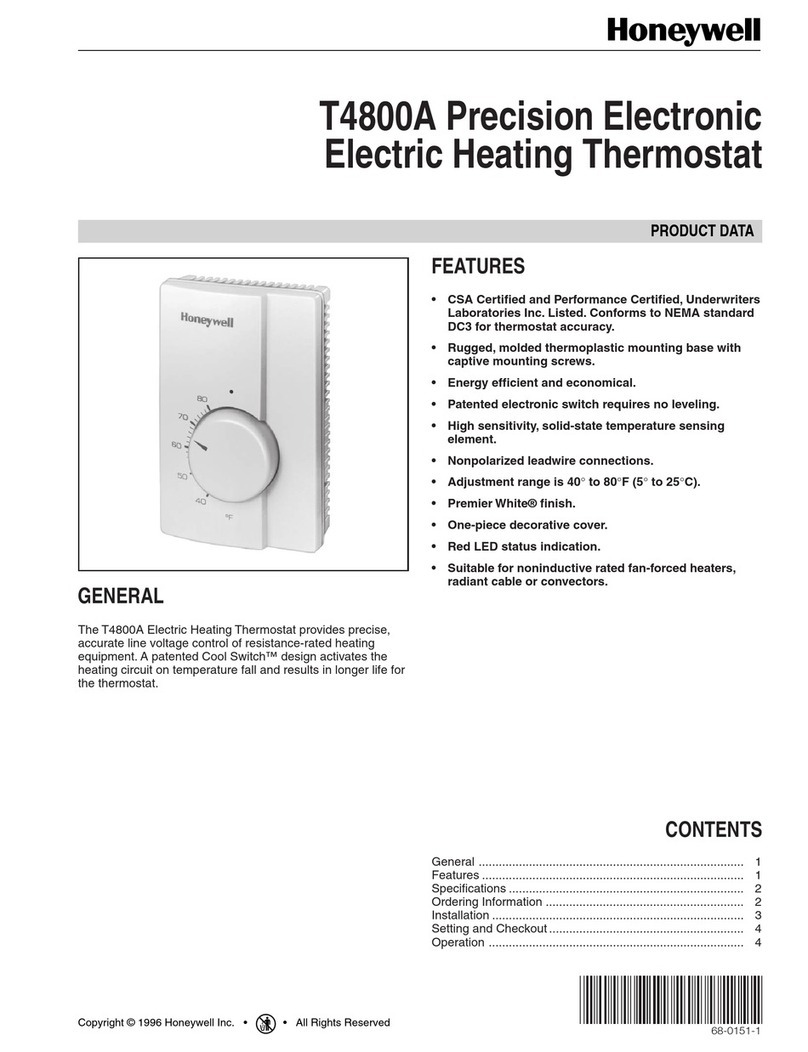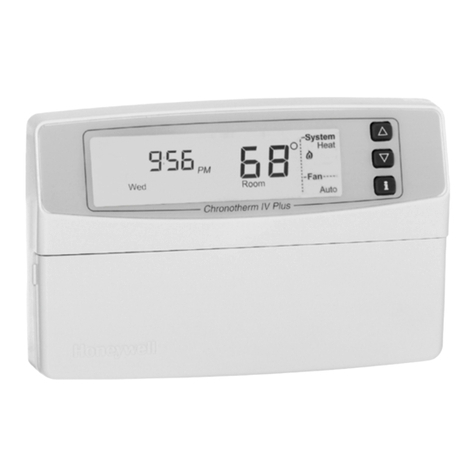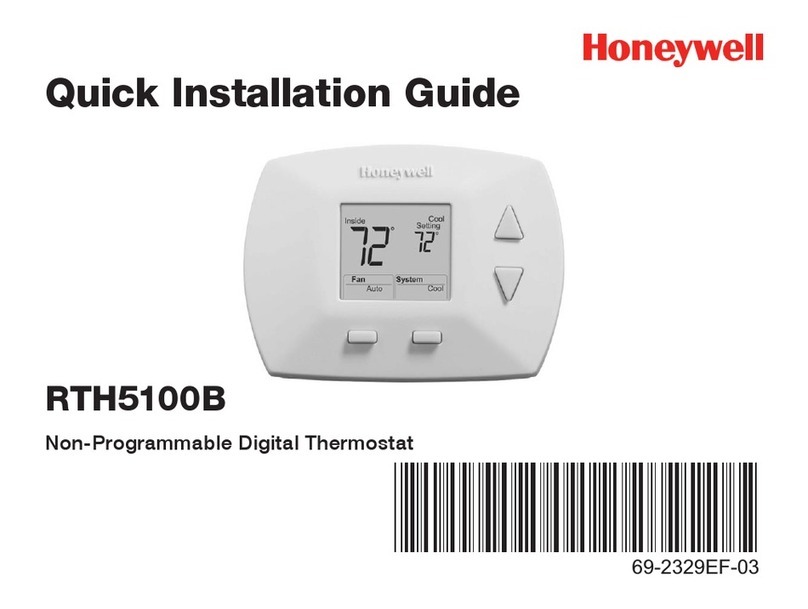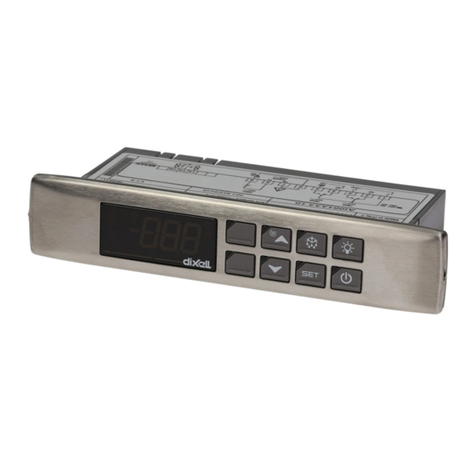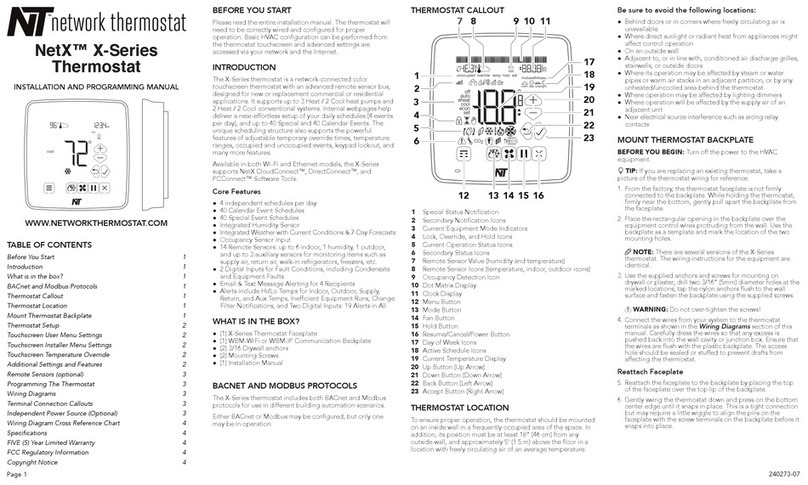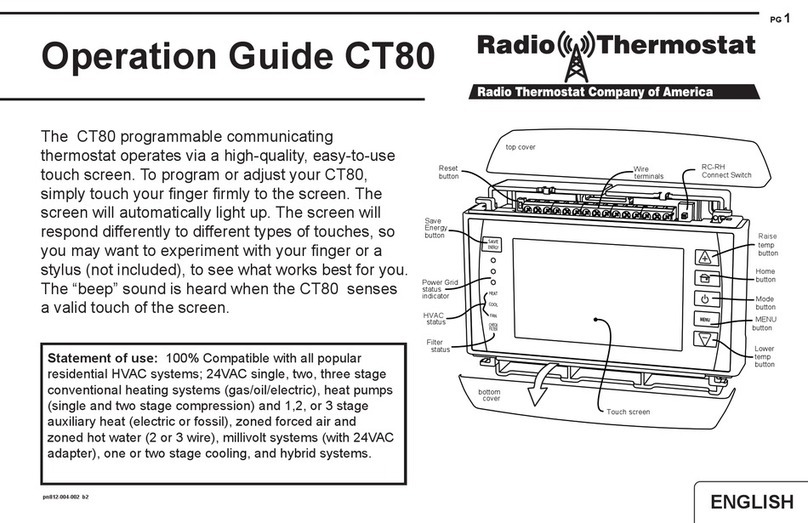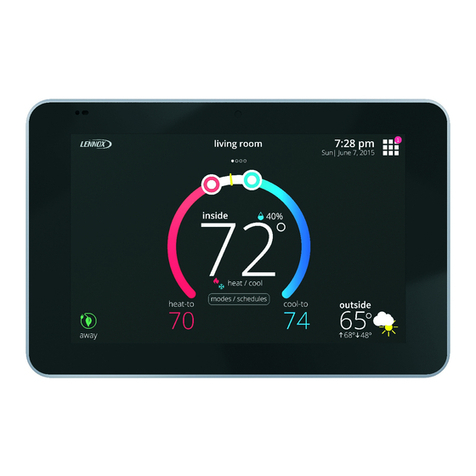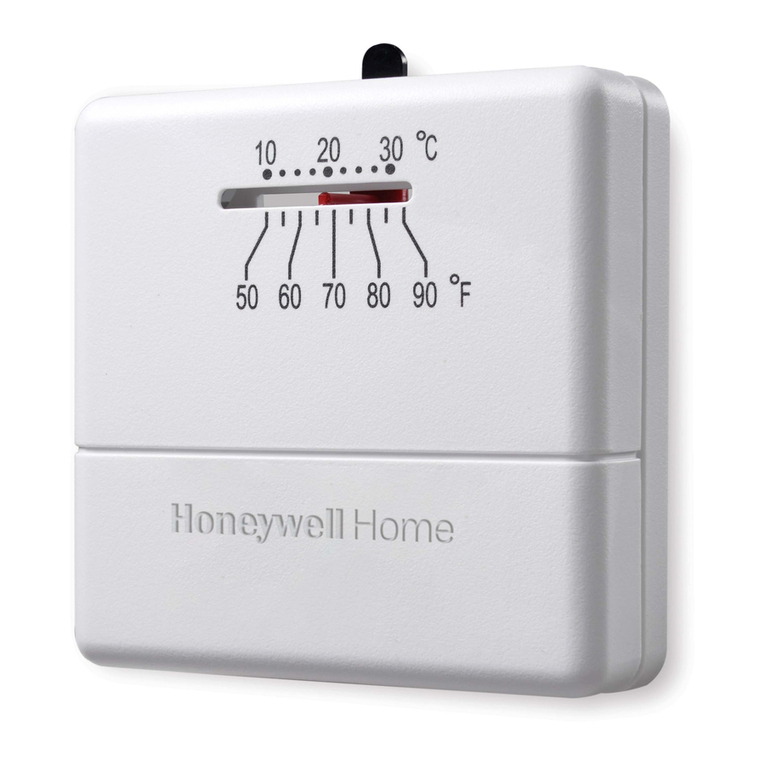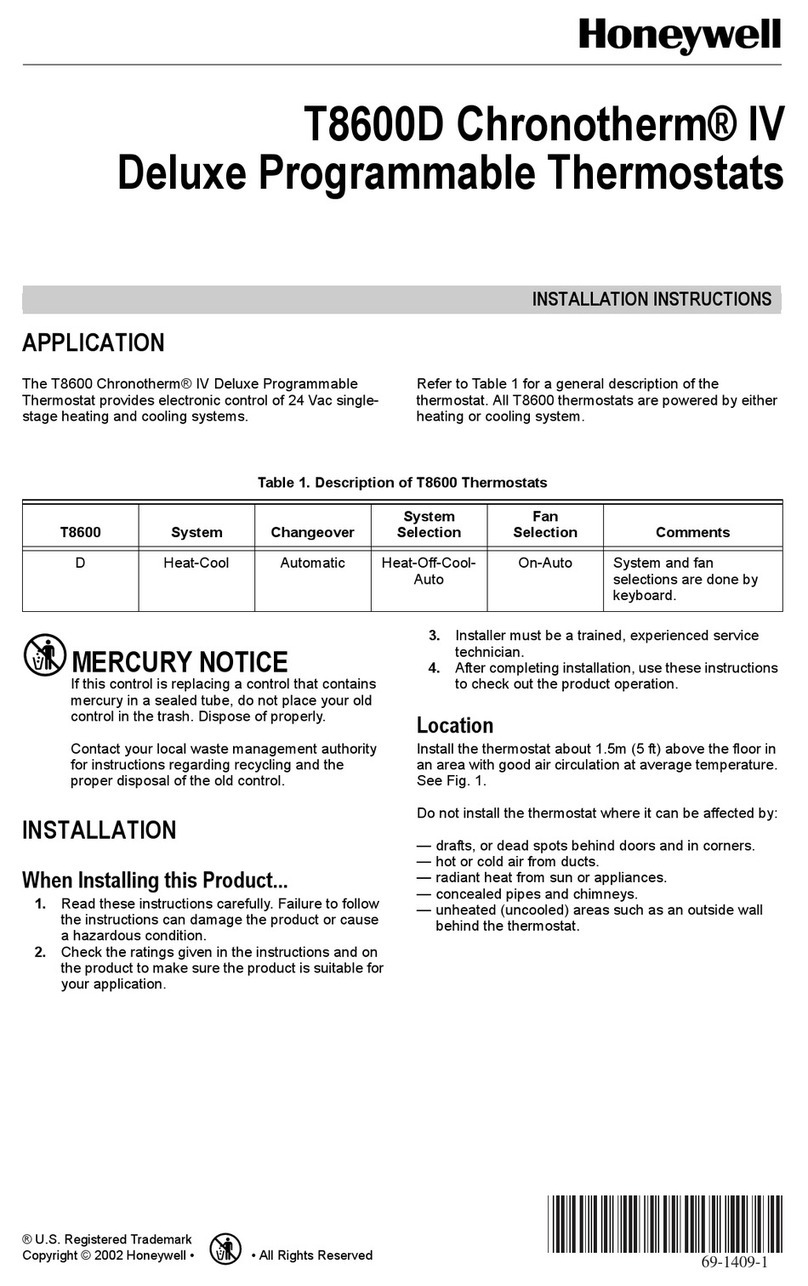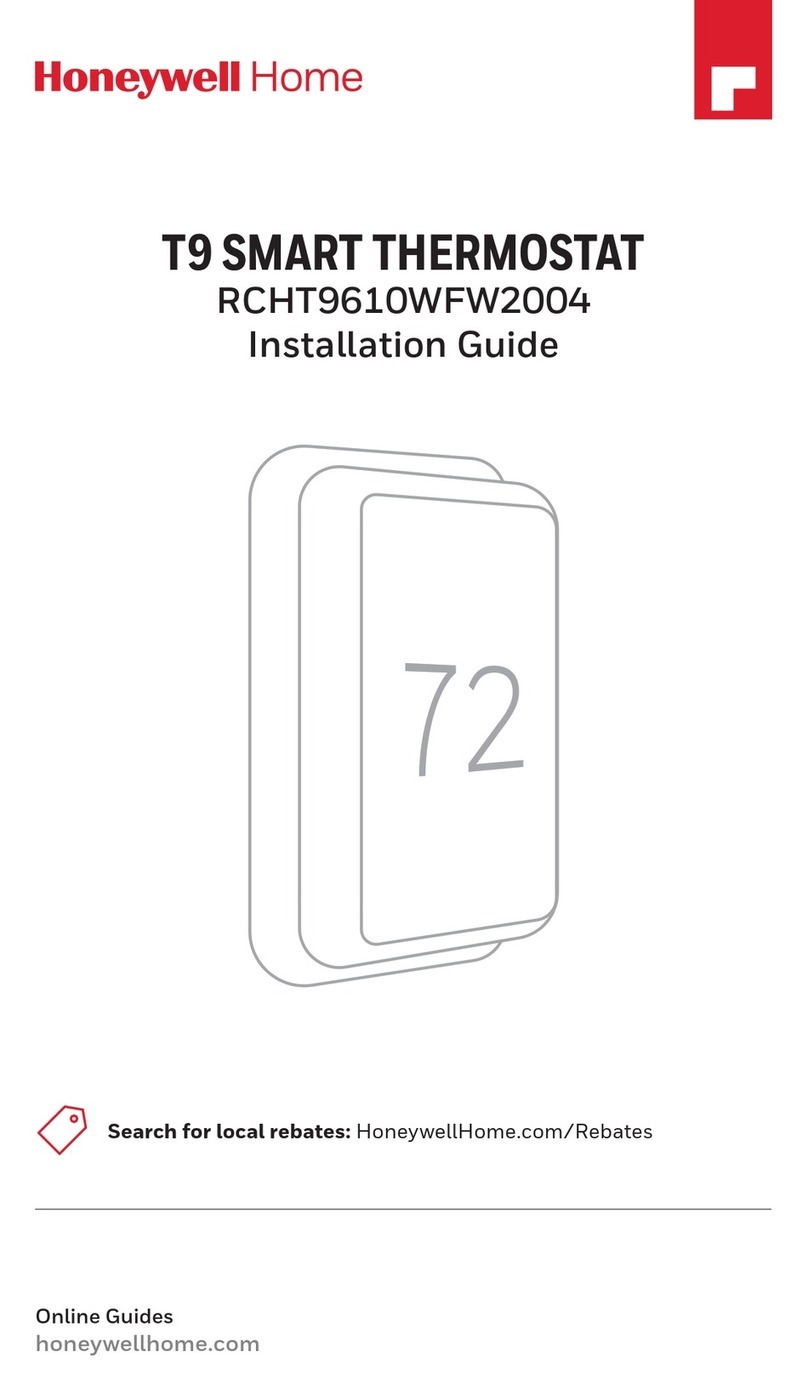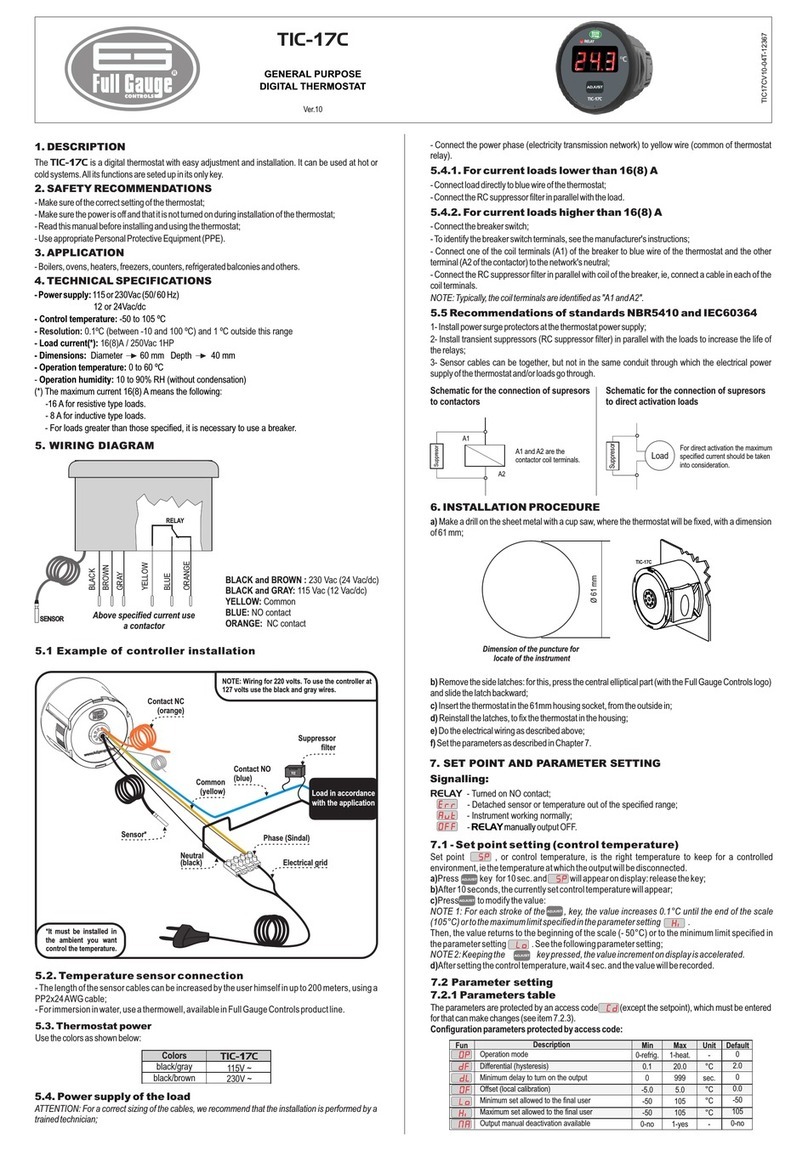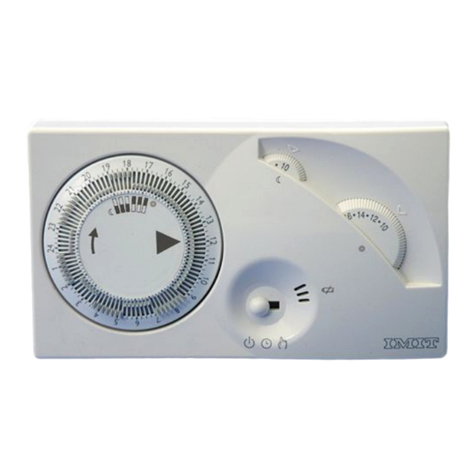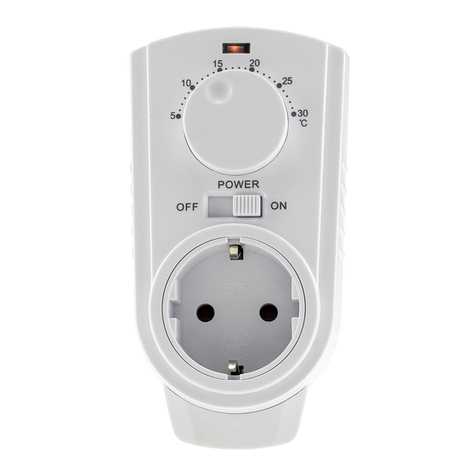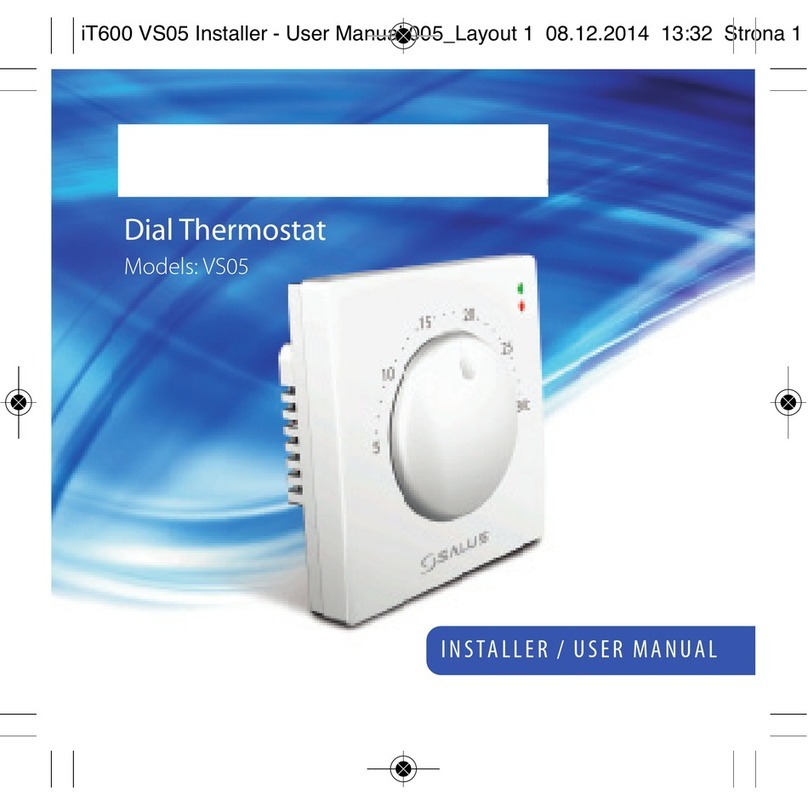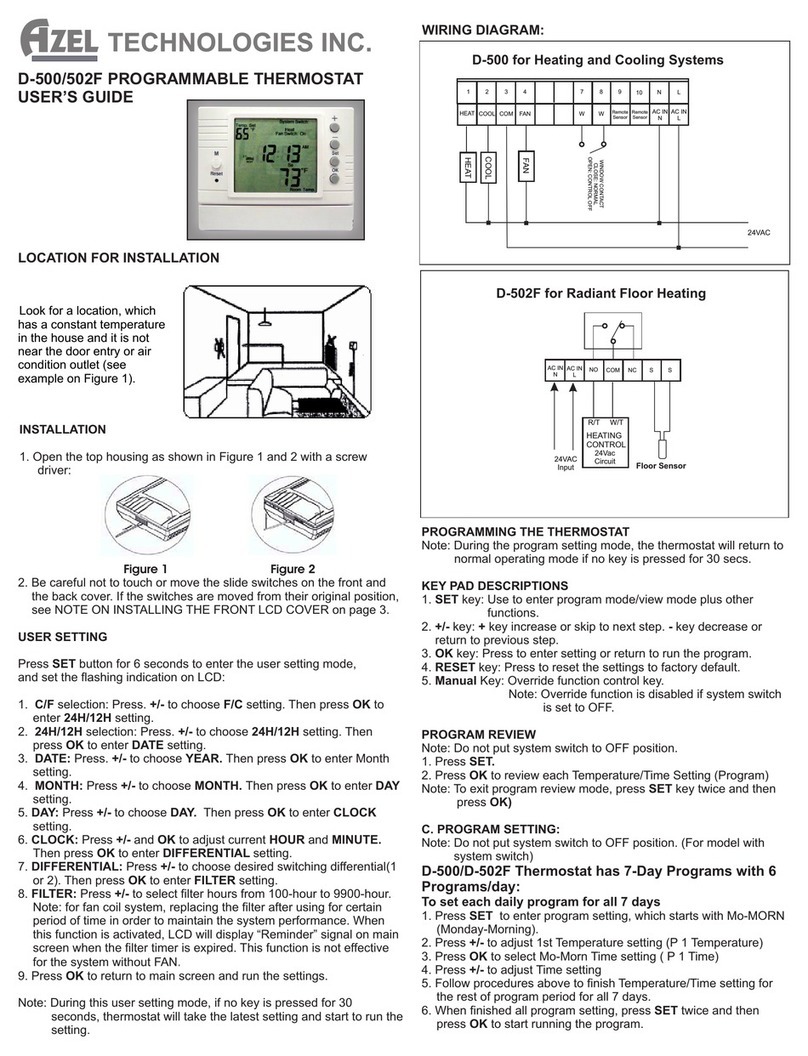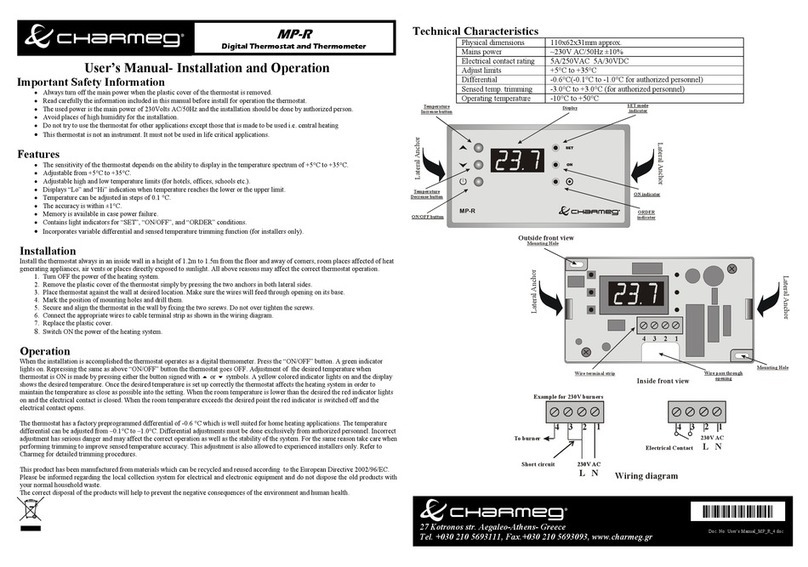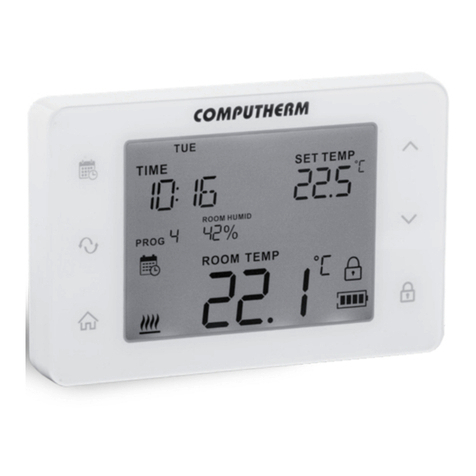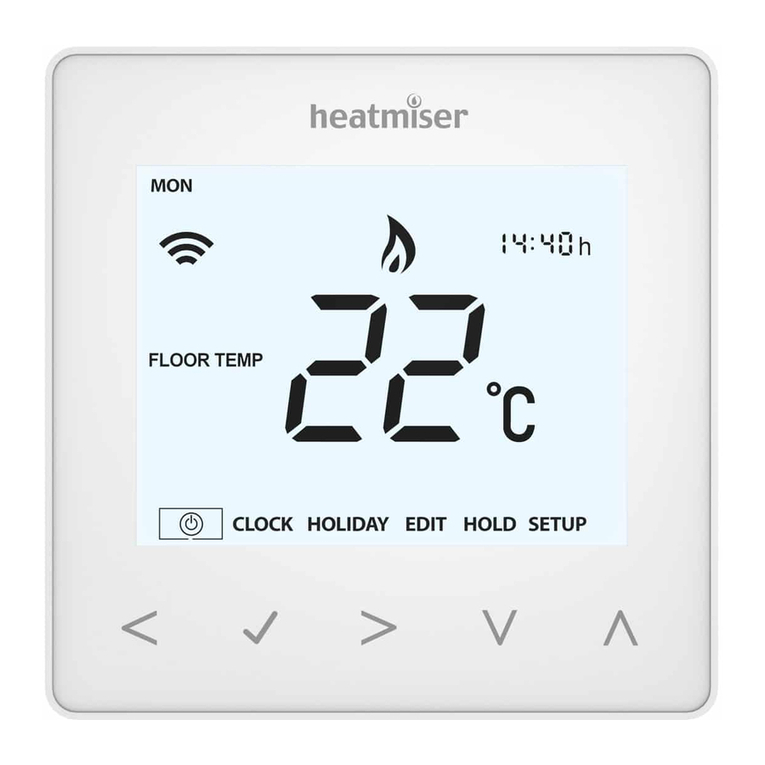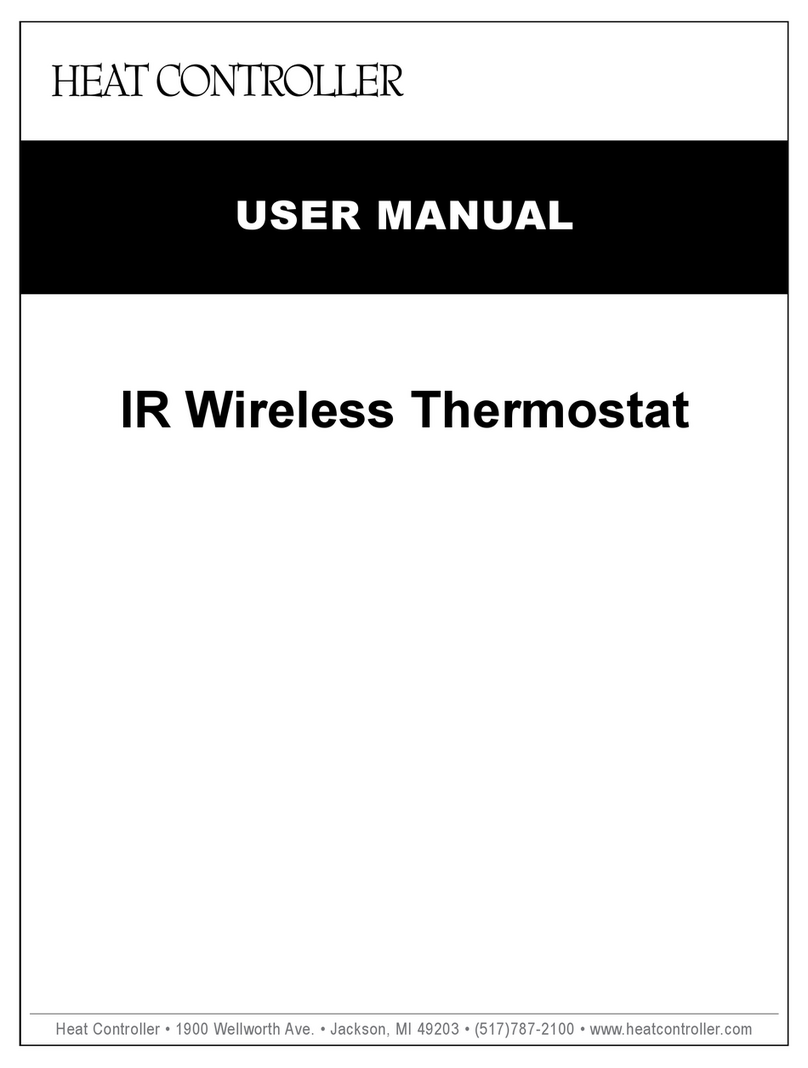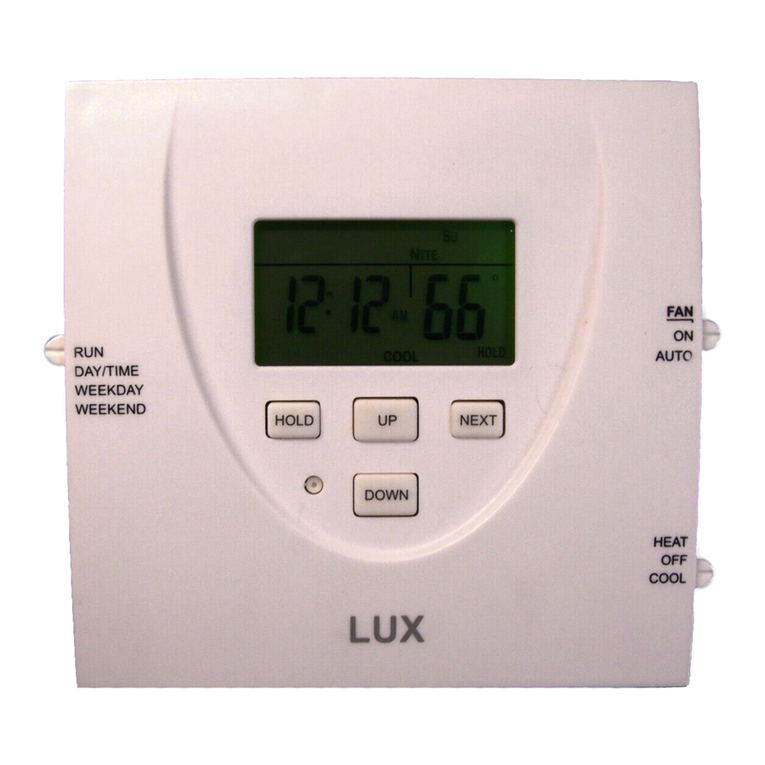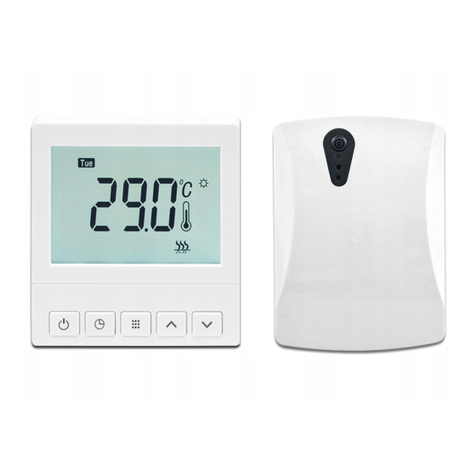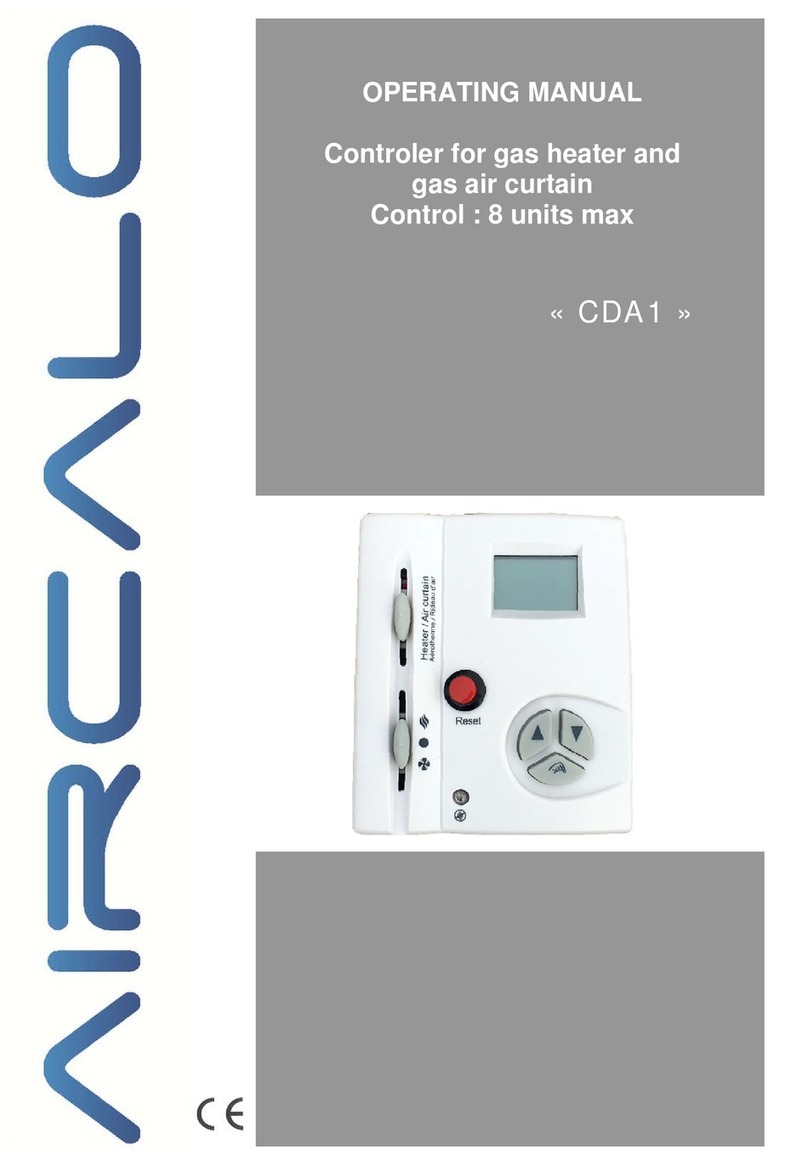
TB7600 SERIES COMMUNICATING RTU/HEAT PUMP THERMOSTATS
62-2016—05 8
THERMOSTAT USER INTERFACE
The thermostat features a two-line, eight-character display. There is a low-level backlit level that is always active and
can only be seen at night. To turn on the back light to high level, press any key on the front panel. The back lit display
will return to low level when the thermostat is left unattended for 45 seconds.
When left unattended, the thermostat has an auto scrolling display that shows the actual status of the system. Use the
MenuScro in the configuration menu to lockout the scrolling display and to only present the room temperature and
conditional outdoor temperature to the user. With this option enabled, no local status is given on the system mode or
occupancy.
Each item is scrolled one by one with the back lighting in low level mode. Pressing any key will cause the back light to
come on to high level. When left unattended for 10 seconds after changes are made, the display will resume automatic
status display scrolling.
Table 3. Sequence and possible display options
for the auto-scroll display
*Network value only
Manual scroll of each menu item is achieved by pressing the Yes (scroll) key repetitively. The last item viewed will be
shown on the display for 30 seconds before returning to automatic scrolling. Temperature is automatically updated
when scrolling is held.
Outdoor air temperature display is only enabled when outdoor air temperature sensor is connected.
• A maximum range status display of 122 F (50 C) indicates a shorted sensor. Associated functions, such as mode
lockouts and economizer function are automatically disabled.
• A minimum range status -40 F (-40 C) is not displayed and indicates a opened sensor or a sensor not connected.
Associated functions, such as mode lockouts and economizer function are automatically disabled.
If alarms are detected, they will automatically be displayed at the end of the status display scroll. During an alarm
message display, the back lit screen will light up at the same time as the message and shut off during the rest of the
status display. Two alarms maximum can appear at any given time. The priority for the alarms is as follows:
•Frost ON: Indicates that the heating is energized by the low limit frost protection room temperature setpoint 42 F
(5.6 C)
•SetClock: Indicates that the clock needs to be reset. There has been a power failure which has lasted longer than 6
hours
•Service: Indicates that there is a service alarm as per one of the programmable digital input (DI1 or DI2)
•Filter: Indicates that the filters are dirty as per one of the programmable digital input (DI1 or DI2)
•Fan lock: Indicates that the heating and cooling action are locked out due to a defective fan operation
Three status LEDs on the thermostat cover are used to indicate the status of the fan, a call for heat, or a call for cooling.
See Table 4 for more details.
Table 4. LED Status
Room Temp >Clock
status >System
mode >Schedule
status >Outdoor
Temp* >Alarms
RoomTemp
x.x °C or°F
Monday
12.00 AM
Sys mode
auto
Occupied Outdoor
x.x °C or°F
Service
Sys mode
off
Occupied
hold
Frost ON
Sys mode
heat
Unoccup SetClock
Sys mode
cool
Unoccup
hold
Filter
Sys mode
emergenc
Override Fan lock
LED
operation
Heat pump models
TB76xxH
Multistage and single stage models
TB7600A, TB7652A, TB7600B and
TB7652B
Multistage economizer models
TB7605B and TB7656B
Fan LED on When G Fan terminal operates When G Fan terminal operates When G Fan terminal operates
Heating
LED on
When Y1 and/or W1 terminal(s)
operate in heating mode
When W1 terminal operate in heating
mode
When W1 terminal operate in
heating mode
Cooling
LED on
When Y1 terminal operate in
cooling mode
When Y1 terminal operate in cooling
mode
When Y1 terminal operate in
cooling mode and or economizer
output is in function
YES NO MENU
M16916
Fig. 11. Heat pump, multistage
and single stage models buttons
and display

